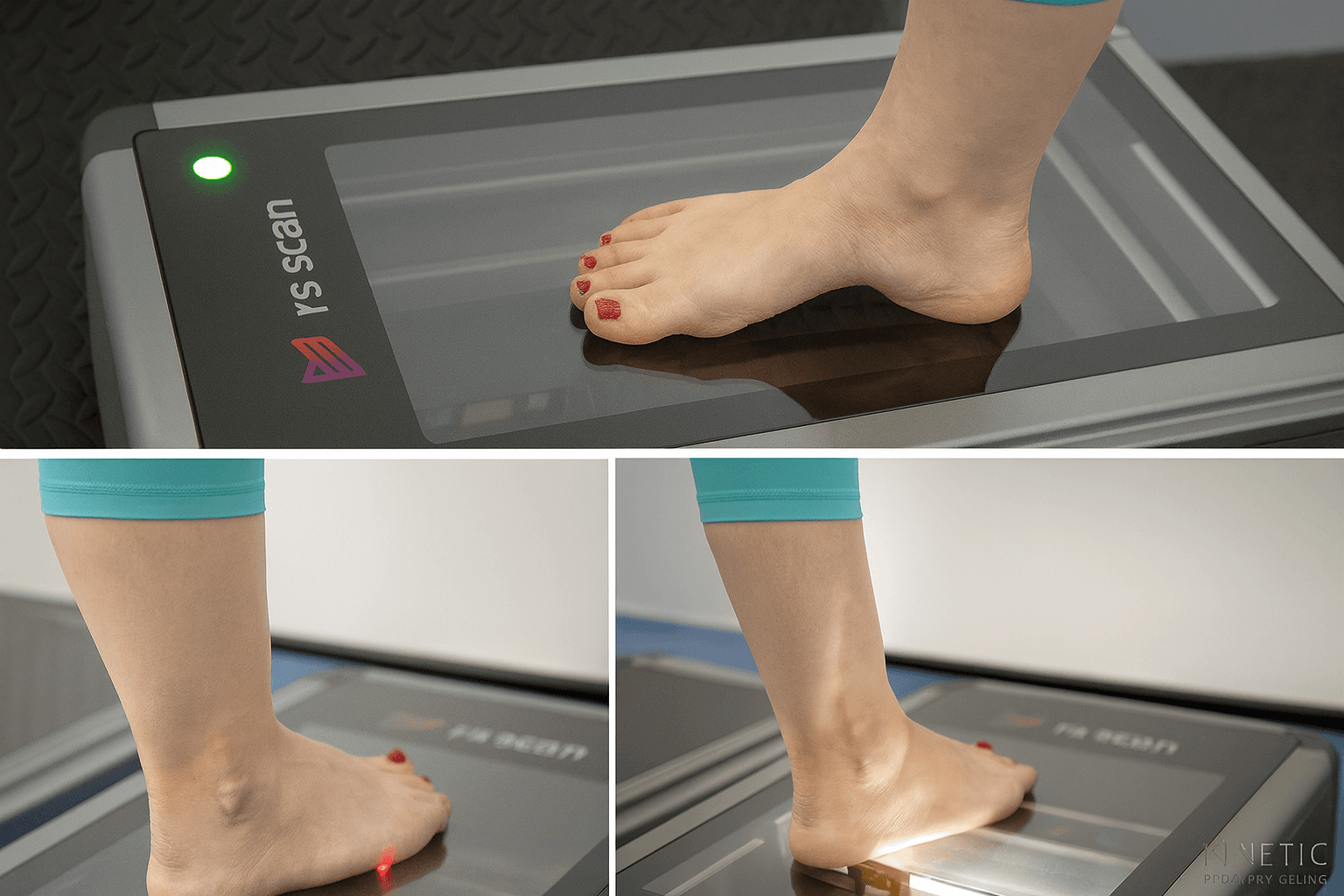About
Non-invasive assessment of foot structure and function
Foot scans utilize advanced imaging technology to analyze the structure, pressure points, and biomechanics of your feet. These non-invasive diagnostic tools help identify foot abnormalities, gait issues, and potential sources of pain.

Non-invasive assessment of foot structure and function
Not Needed
Instant-book option available
Our comprehensive foot scanning process combines multiple diagnostic approaches to provide a complete picture of your foot health. Using state-of-the-art pressure plate technology and 3D imaging systems, we capture dynamic and static measurements of your feet during both standing and walking. The pressure mapping system consists of thousands of sensors that detect even minor variations in weight distribution, while our 3D scanners create detailed models of your foot anatomy. This dual approach allows us to identify not just structural abnormalities, but also functional issues that only become apparent during movement.
The scanning process begins with a thorough clinical assessment of your medical history and current symptoms. You’ll then walk barefoot across our pressure-sensitive gait analysis platform, which records your step pattern, pressure distribution, and weight transfer in real time.

Combines structural and functional assessment
No radiation or uncomfortable procedures
Can identify issues before symptoms develop
Analysis available immediately after scanning
We offer a range of flexible payment options to make your treatment experience smooth and stress-free.
Most patients choose to self-fund their treatment. We accept:
We’ve partnered with GoCardless to offer interest-free instalment options. You can easily set up a Direct Debit to spread the cost of your treatment over time.
Looking for a financing plan? You can apply through Kandoo, our trusted finance partner.
We work with a small number of approved insurance providers. However, due to restrictions from many insurers, not all treatments are covered. Please check with your insurer and speak to our team before booking to avoid disappointment.
Use our website to book an initial consultation, or give us a call.
Our doctors might request you arrange a scan before your initial consultation. Or, they’ll chat with you (face to face or online) and recommend a scan after your initial consultation, if they think you need one.
Once your scan results have been reviewed, and your doctor has explained your options, you will be booked in for treatment.
Following your treatment, your doctor will give you rehab recommendations.
You will be booked in for a follow-up consultation, so your doctor can check your progress. You might need further rehab after this consultation.
Once your doctor is happy with your recovery, you will be discharged. After discharge, we are always here for further questions or support, should you need it.
Do I need to prepare for a foot scan?
Are foot scans covered by insurance?
What's the difference between this and a podiatrist's exam?
We now offer select services at our Harley Street London clinic through the London Cartilage Clinic, led by internationally recognised surgeon Professor Paul Lee.
Our London clinic offers advanced treatments like cartilage regeneration and joint preservation to help patients avoid or delay joint replacement.
Located in Central London, our clinic provides convenient access to world-className musculoskeletal care without long NHS wait times.
If you would like to be seen in Central London, visit our London Clinic page for pricing, available treatments, and to book directly online.
Our Harley Street clinic uses cutting-edge techniques designed to reduce downtime and support faster, more effective recovery, getting you back to your lifestyle sooner.
Don’t wait to find relief. Whether it’s a consultation, scan, or treatment, we’re ready to help. Book a call with the admin team to discuss.